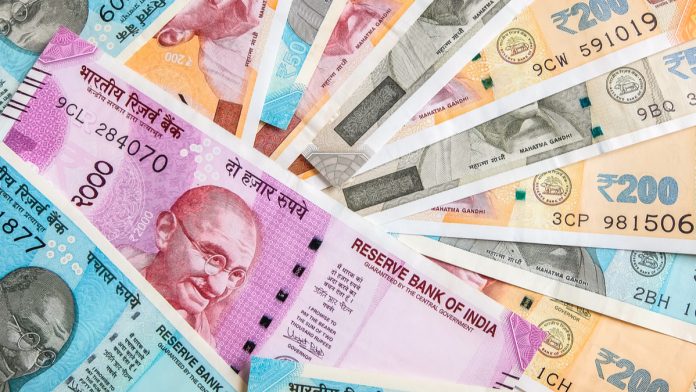- Indian Rupee (INR) falls for a second day
- RBI has built up forex reserves to a 10-month high
- US Dollar (USD) rises ahead of tomorrow’s inflation data
- US debt ceiling discussions are under the spotlight
The US Dollar Indian Rupee (USD/INR) exchange rate is rising for a second straight session. The pair rose +0.09% in the previous session, settling on Monday at 81.77. At 15:30 UTC, USD/INR trades +0.4% at 82.10 and trades in a range of 81.78 to 82.15.
The Rupee fell to a two-week low versus the greenback amid US dollar outflows and amid a fall in other Asian currencies. Mixed Chinese trade data weighed on risk sentiment.
While Chinese exports rose 8.5% year on year, a second straight month of growth, albeit slowing growth. However, imports unexpectedly fell 0.1% year on year, raising doubts over the domestic recovery in China.
Meanwhile, India’s foreign exchange reserves are at a comfortable level, a 10-month high of $588.8 billion in the week ending 28 April, rebounding from a drop to $524.50 last October, when the Rupee fell to a record low against the USD.
Since October 2022 the RBI has been rebuilding foreign exchange reserves, capitalizing on the Rupee’s recovery.
The US Dollar is rising across the board. The US Dollar Index, which measures the greenback versus a basket of major currencies, trades +0.21% at the time of writing at 101.6, extending gains for a second day.
The US dollar is pushing higher in a quiet session as investors look ahead to US inflation data tomorrow, which could shed more light on where the Federal Reserve will take interest rates. Sticky inflation could see the market raise bets of a rate hike in June, while cooling inflation data could see bets rise again that the Federal Reserve will pause its rate hiking cycle.
In addition to inflation, investors will be keeping an eye on debt ceiling discussions between President Biden and top Republicans and Democrats as they attempt to hammer out a deal to raise the US debt ceiling of $31.4 trillion in order to avoid the US defaulting on its debt obligations.





